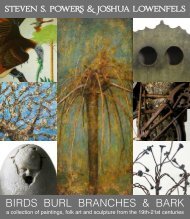SHUT THE DOOR AND LISTEN FROM OUTSIDE
In conjunction with the Outsider Art Fair: New York, we present our Winter 2020 Catalogue, "Shut The Door And Listen From Outside" This 88-page catalog features recent finds in the genres of Outsider and Self-Taught Art with a few additions of related American Folk Art. (Please note that NOT all of these works will be exhibited at The Outsider Art Fair). "Shut The Door And Listen From Outside" is a statement from Oblique Strategies, which is a set of cards each with a suggestion, directive, or constraint created by the artists Brian Eno and Peter Schmidt to encourage lateral thinking and to break creative blocks. With this in mind, as an art dealer or collector, one may think, how will this look if I see it indirectly? From a room away? Through a window? Obscured through a crowd of people? Or as I quickly scroll through Instagram? This question is not a shallow proposition—we often see a particular artwork from an off-angle or perspective—not in optimal presentation. Indeed, if we think about it, we likely first approached an artwork we came to love because it looked good "from outside." It had something special going on from a small section we gleaned through a crowd of people, or the composition came into focus as we came towards it from another room. As an artist, we may interpret this as another way of seeing. To purposely not see clearly or overtly—to create something anew based on partial information or hazy suggestions seen or heard. Or another way to look at a work in progress. View it from the side, across the room, or without glasses to see a fuzzy tonal map—is it still working for you?
In conjunction with the Outsider Art Fair: New York, we present our Winter 2020 Catalogue, "Shut The Door And Listen From Outside" This 88-page catalog features recent finds in the genres of Outsider and Self-Taught Art with a few additions of related American Folk Art. (Please note that NOT all of these works will be exhibited at The Outsider Art Fair).
"Shut The Door And Listen From Outside" is a statement from Oblique Strategies, which is a set of cards each with a suggestion, directive, or constraint created by the artists Brian Eno and Peter Schmidt to encourage lateral thinking and to break creative blocks.
With this in mind, as an art dealer or collector, one may think, how will this look if I see it indirectly? From a room away? Through a window? Obscured through a crowd of people? Or as I quickly scroll through Instagram? This question is not a shallow proposition—we often see a particular artwork from an off-angle or perspective—not in optimal presentation. Indeed, if we think about it, we likely first approached an artwork we came to love because it looked good "from outside." It had something special going on from a small section we gleaned through a crowd of people, or the composition came into focus as we came towards it from another room.
As an artist, we may interpret this as another way of seeing. To purposely not see clearly or overtly—to create something anew based on partial information or hazy suggestions seen or heard. Or another way to look at a work in progress. View it from the side, across the room, or without glasses to see a fuzzy tonal map—is it still working for you?
- No tags were found...
Create successful ePaper yourself
Turn your PDF publications into a flip-book with our unique Google optimized e-Paper software.
Induction Center<br />
Thomas King Baker (1911 - 1972)<br />
Watercolor, charcoal, and calendar scrap on craft paper<br />
Size: 13 1/4"(h) x 9" (w) (sight)<br />
Exhibited: Albrecht-Kemper Museum of Art, MO, 1997<br />
Illustrated and discussed in: Oh For Pity’s Sake, We’ve Already Seen This<br />
Opera: The Art of Thomas King Baker; p. 37<br />
Thomas King Baker was an insurance underwriter by day, self-taught,<br />
basement artist by night. He and his wife, Mila Hoover, were middleclass<br />
socialites and enjoyed the opera, galleries, museums and a vibrant<br />
nightlife. King was friendly with local artists and was a collector. Among<br />
friends and family, his art-making was a poorly kept secret—they knew<br />
of his passion but were unaware of the extent of King’s breadth and body<br />
of work. King never exhibited while he was alive.<br />
King died from the effects of alcoholism in 1972.<br />
In 1991, Thomas McCormick, an art dealer, stumbled upon a few<br />
interesting paintings that he could not immediately identify. After some<br />
detective work, McCormick figured out that the works were by Baker.<br />
McCormick contacted Baker’s wife Mila, who was still alive and<br />
cataloged a large cache of works that Mila had kept together.<br />
King’s paintings, illustrations, and sketchbooks were exhibited at the<br />
Albrecht-Kemper Museum in 1997.




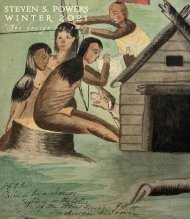
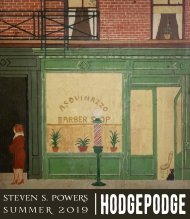
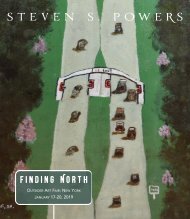

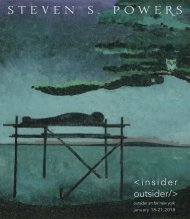
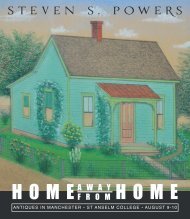
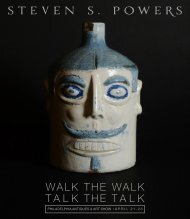
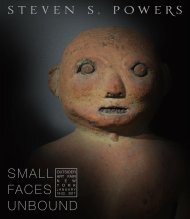
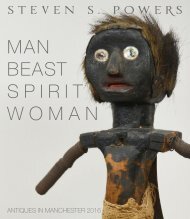
![NEEDLE • KNIFE • TORCH [&] BRUSH](https://img.yumpu.com/55309753/1/190x219/needle-o-knife-o-torch-brush.jpg?quality=85)
